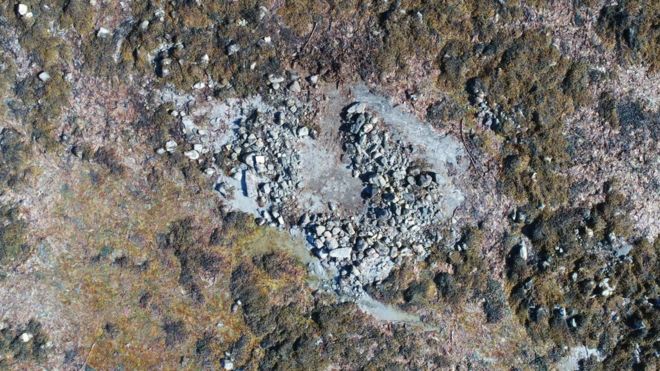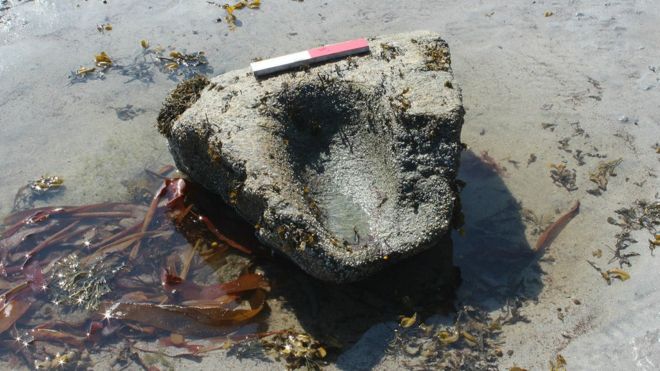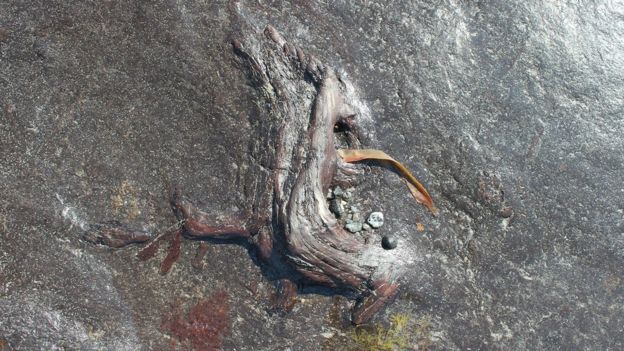Submerged ancient forest at Lionacleit in the Western Isles of Scotland reveals some of its secrets
Benbecula (Scottish Gaelic: Beinn nam Fadhla) is an island of the Outer Hebrides (Na h-Eileanan Siar) off the west coast of Scotland. Lionacleit in Benbecula is one of more than 20 recorded sites of ancient woodland that once grew in the islands. Archaeologists have now found evidence of early human activity at a submerged prehistoric forest at Lionacleit. The Scottish Coastal Archaeology and the Problem of Erosion (SCAPE) Trust, a charity that works out of the University of St Andrews, was alerted to the remains by a local resident, Ann Corrrance Monk. They include a wall, possible remains of sub-circular stone structures which could be houses, a quern stone and butchered animal bone. The rare finds have survived in an intertidal zone, which is an area that is above water at low tide and underwater at high tide. The finds have been described as 'incredibly rare'. Samples have been sent for radiocarbon dating.
The sub-fossil (matter partially rather than fully fossilised) trees at Lionacleit are the remnants of woodland once widespread across the Western Isles. SCAPE point to the area having a mix of birch, hazel, willow, aspen, rowan, oak, at its height some 10,000 to 7,000 years ago. Then from 6,000 to 4,500 years ago the woodland declined, and by about 2,800 to 2,500 years ago the isles were mostly treeless. Factors contributing to the island forest decline were rising sea levels, a wetter and windier climate and human activity. The site at Lionacleit, in common with others in the Western Isles, is at risk from coastal erosion. So as much data as possible is being collected and studied. Information on the work of Scottish Coastal Archaeology and the Problem of Erosion (SCAPE) can be found on their website.
Images: SCAPE








